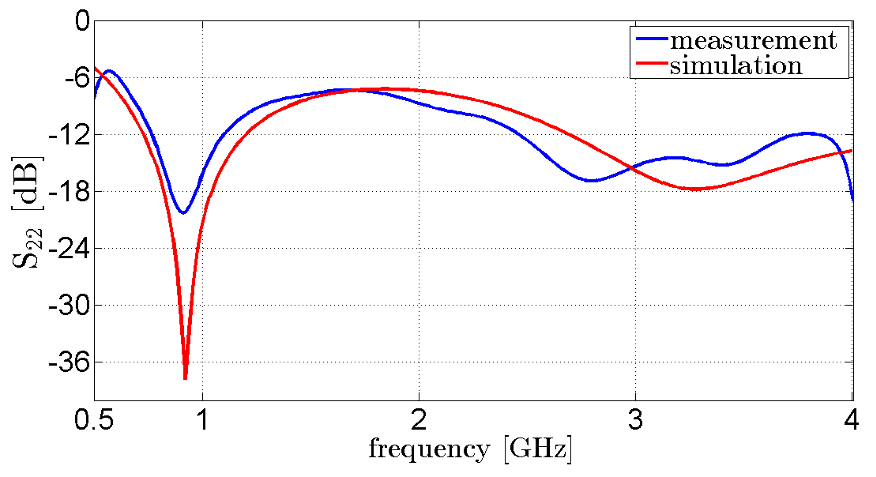




read more









![Figure 4: Theoretical (solid line) [12] and measured (dashed line) dielectric properties of the measurements of brain (black), CSF (dark blue), bone (green), fat (light blue) and skin (magenta).](/figures/figure-4-theoretical-solid-line-12-and-measured-dashed-line-20qz53ia.png)

Due to the spherical geometry of the boundary conditions, the electric field can be expanded as an infinite sum of vector spherical harmonics and be expressed analytically.
At 1GHz for example, the optimum is at 𝜀𝑚𝑚 = 10, however the normalized transmitted power drops by approximately 3dB if 𝜀𝑚𝑚 = 80 (approximately water at 1GHz), but the imaging resolution would increase by almost a factor of 3.
Depending on the sensitivity of the data acquisition of the imaging system, the frequency and matching medium ranges can be chosen using simplified analytical models and then be fine-tuned using more complex EM solvers and more realistic models of the head.
GHz the normalized transmitted power 𝑃𝑁𝑡 drops very rapidly by 15dB due to the strong attenuation in the tissues, which was predicted by both the planar and the spherical model.
In [19] for 7T MRI the Larmor frequency is around 300MHz and the brain region is modeled as a combination of CSF, grey matter, and white matter.
The transmission parameter |𝑆12| between a monopole antenna (port 2) vertically placed in the center of the head phantom and a vertically polarized horn antenna (port 1) placed at 1m distance is measured between 0.5 and 4 GHz with a HP 8720D to ensure far field conditions of a linearly polarized plane wave, along the z-direction.
The dielectric properties of the ABS plastic structure of the 3D printed prototype were measured in the range of [0.5 − 4] GHz using the Agilent 85070E dielectric probe kit.
The color change corresponds to a drop in the normalized transmitted power in steps of 3dB and up to -36dB (all values below -36dB are depicted as the same dark blue color).
The almost free choice of the permittivity (1dB drop of 𝑃𝑁𝑡 for increasing 𝜀𝑚𝑚 from 56 to 80) means also, that it can be used to improve the imaging resolution according to the discussion in the introduction.
The strong attenuation of at least 15dB between 1.5GHz and 3GHz in the measurements matches the predictions made with simple transmission line models [14].
As the filling process allowed to fill each layer on-site without moving the prototype (see Fig. 5), it was possible to estimate the influence of each layer on the power transmission.
because the authors are only interested in the transmission inside the head, this is not a real restriction and the results using a plane wave should be also valid for an antenna directly placed on the head since the propagation of an electromagnetic wave depends only on the properties of the medium and not on the characteristics of the wave, that is plane wave, spherical wave, etc.
The spherically stratified model, sketched in Fig. 1 (right), is a more realistic model of the human head than the planar model in [14] while still allowing an analytic solution for the electric field distribution.